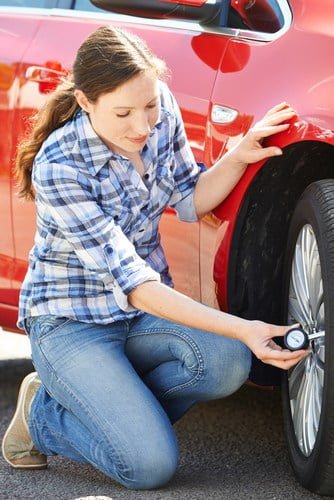 The tires on your vehicle are critical to its safety as well as its performance. All drivers should know simple tire maintenance. Doing so will keep your tires functioning at their best and will also make them last longer. It will significantly lessen your chances of getting flat tires, skidding, and other tire emergencies.
The tires on your vehicle are critical to its safety as well as its performance. All drivers should know simple tire maintenance. Doing so will keep your tires functioning at their best and will also make them last longer. It will significantly lessen your chances of getting flat tires, skidding, and other tire emergencies.
⇒ Check The Tread On Your Tires
One of the most important steps you should know for tire maintenance involves checking the tread on them. Tread helps the tires grip the road. It can be incredibly important during inclement weather. It prevents the car from skidding and sliding on wet or icy roadways.
To check the tread on your tires, you can insert a upside down quarter into the tire grooves. If you can see George Washington’s head, the tread on the tire is too low, meaning that you will need to replace the tire soon. If you cannot see Washington’s head, the tread is sufficient for safe driving.
You should check the tread on your tires every month or before you embark on a long car journey. This preventative tire maintenance tip can help you avoid being in an accident or not being able to control the car in bad weather.
⇒ Check Your Tire Pressure
You should also check the pressure in all four tires at least once a month or before you take a long road trip. The tires should have the required weight of air in them. You can find the amount recommended for the tires on your car by looking on the inside of your car door or in your car owner’s manual.
You should check the tire pressure first thing in the morning when the air inside of the tires is stable and cool. Maintaining the right amount of air in the tires is critical for being able to control the car on wet surfaces. Proper air pressure helps the tires grip the road and prevents the car from slipping and sliding on slick roads.
⇒ Rotate Your Tires
Another preventative tire maintenance tip to keep in mind when you want to take the best care of your tires involves having them rotated on a regular basis. Ideally, you should have the tires rotated every 5000 to 7000 miles. Rotating the tires helps all four of them wear at the same pace.
Further, when you buy new tires, you should have them placed on the back axles rather than on the front. Putting new tires on the back axles makes the car easier to handle in all types of road conditions. It also reduces the likelihood of the rear part of the car losing traction and spinning out of control when you are driving on slick road surfaces.
⇒ Balance & Align Your Tires
Finally another tire maintenance tip , you should have your tire balanced and aligned on a regular basis. Balancing and aligning the tires prevents them from wearing out too quickly. It also prevents the car from pulling to one side while you are driving it.
Many people schedule their tire balancing and alignment at the same time as their oil changes. You should ideally have the tires balanced and aligned every 3000 to 9000 miles or whenever you buy new tires for your vehicle.
The tires on your car can last longer and perform better when you take care of them. Simple tire maintenance does not require a lot of money or effort. Simple measures like checking the tread and tire pressure can go a long way in maintaining the tires properly and ensuring that your car is safe to drive at all times.






